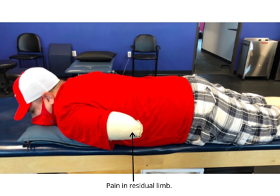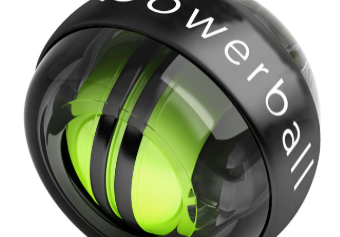“Do joint mobilizations assist in the recovery of lateral elbow tendinopathy? A systematic review and meta-analysis”
Filed under Treatments
By Sophia Grimm
Lucado, A. M., Dale, R. B., Vincent, J., & Day, J. M. (2019). Do joint mobilizations assist in the recovery of lateral elbow tendinopathy? A systematic review and meta-analysis. Journal of hand therapy : official journal of the American Society of Hand Therapists, 32(2), 262–276.e1. https://doi.org/10.1016/j.jht.2018.01.010
The Skinny:
The purpose of this study was to determine if joint mobilizations are effective in improving pain, grip strength, and disability in adults with lateral elbow tendinopathy (LET). LET is a degenerative tendon pathology that is a prevalent condition in manual workers, middle-aged adults ages 45-54, and athletes with a prevalence reported as high as 12.2% in the at-risk population. The study tested three types of joint mobilizations. The first joint mobilization, mobilization with movement (MWM) technique, consists of a lateral glide where the therapist glides the proximal forearm laterally and sustains it. At the same time, the distal end of the humerus is fixed on the other hand. This is performed while the patient performs a pain-free gripping action for 6 repetitions with 15 second rest periods. Mill’s manipulation was also included in this study and is performed by internally rotating and abducting the shoulder so that the olecranon faces the ceiling. The therapist holds the patient’s wrist in full flexion and forearm in pronation and then applies a high-velocity low-amplitude thrust at the elbow’s end range in extension. Lastly, this study included regional mobilization techniques to the cervical spine. This included rotational high-velocity, low-amplitude thrust manipulation of C5-6, grade 3 slide glides of C5-6, and grade 3 or 4 passive accessory intervertebral movements of cervical and thoracic segments.
In the Weeds:
This systematic review included a total of 7 studies in the meta-analysis. Inclusion criteria consisted of control trial studies of adults with a clinical diagnosis of LET. For this systematic review, researchers classified three joint mobilization techniques: mobilization with movement (MWM), Mill’s manipulation, and regional mobilization techniques. A standardized set of data was extracted for all selected studies. The summary data were considered statistically significant if the 95% confidence interval (CI) did not include 0. Following data comparisons, researchers found that MWM demonstrated a mean effect size of 0.43 (95% confidence interval [CI]: 0.15-0.71) for improving pain rating and 0.31 (95% CI: 0.11-0.51) for improvements in grip strength. The study also found that Mill’s manipulation had a mean effect size of 0.01 (95% CI: 0.27 to 0.26) for grip strength and 0.47 (95% CI: 0.11-0.82) for pain rating.
Bringing it Home:
There is compelling evidence that joint mobilizations directed at the elbow improve both pain and functional grip scores. Pain, grip strength, and functional outcomes were improved with regional mobilizations. The data from this meta-analysis demonstrated moderate effect sizes in favor of both Mill’s manipulation and MWM on patients with LET. LET. Given this study’s outcomes, the authors can confidently recommend mobilization as a treatment for LET in the immediate, short, and intermediate terms before symptoms become chronic.
Rating: 5/5
This systematic review and meta-analysis are very well done. The researchers had clear inclusion and exclusion criteria to identify suitable studies for drawing proper comparisons and conclusions. During the study selection process, all titles and abstracts were reviewed by two reviewers to ensure relevance to the topic. This study’s greatest limitation was that no true control group existed for many of the studies included in this review. Most studies varied significantly in set-up and data collection.
3 Comments
Leave a Comment
More To Read
Early Mobilization After Volar Locking Plate Osteosynthesis of Distal Radius Fractures in Older Patients: A Randomized Controlled Trial
By: Rachel Reed Sørensen, T. J., Ohrt-Nissen, S., Ardensø, K. V., Laier, G. H., & Mallet, S. K. (2020). Early Mobilization After Volar Locking Plate Osteosynthesis of Distal Radial Fractures in Older Patients-A Randomized Controlled Trial. The Journal of hand surgery, S0363-5023(20)30276-8. Advance online publication. https://doi.org/10.1016/j.jhsa.2020.05.009 The Skinny: The purpose of this randomized controlled trial was…
Read MorePhantom Limb Pain, Residual Limb Pain, & Phantom Limb Sensation: Which is Which?
Written by Melissa Miller Introduction After amputation, the majority of individuals will experience phantom limb pain (PLP), residual limb pain (RLP), and/or phantom limb sensation (PLS). Experiencing these pains or sensations can greatly disrupt an individual’s quality of life. It is important to know what each of these are as each can impact the client…
Read MoreWrist Proprioception Ideas for Hand Therapy
Wrist Proprioception Intervention Ideas: By Ammie Ingwaldson Lack of wrist proprioception exercises can affect clients in the hand therapy setting with neurological and musculoskeletal conditions. Proprioception limitations are found in common conditions such as carpal tunnel syndrome, distal radius fracture, and CRPS (Valdes, Naughton & Algar, 2014). Proprioception is necessary during daily tasks to provide…
Read MoreSign-up to Get Updates Straight to Your Inbox!
Sign up with us and we will send you regular blog posts on everything hand therapy, notices every time we upload new videos and tutorials, along with handout, protocols, and other useful information.






I wish you would’ve included a video demonstration
Would love to see a video as well.
“can confidently recommend mobilization as a treatment for LET in the immediate, short, and intermediate terms before symptoms become chronic”
Unfortunately how often does one get a patient in a non chronic state? Not very often. As a profession we need to get beyond the holy grail search for the “best” passive intervention. We need to talk to tendons in their language, not ours, we need to give it what it needs, load.